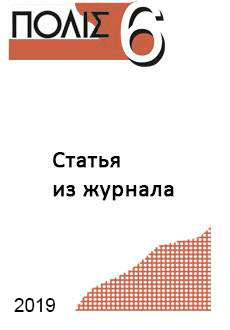Online shop of "Polis. Political Studies" Journal
We in the world, the world in us
Arbatova N.K. Strategic Autonomy of the European Union: Reality or Good Intention? – Polis. Political Studies. 2019. No. 6. P. 36-52. (In Russ.)
Free!
European Union, European Integration, Permanent Structured Partnership, Common Security and Defense Policy, Ghent Initiative, Global Security Strategy, populist nationalism, European Defense Action Plan, European Defense Agency, European Defense Fund, NATO, European security.
Integration processes as the highest level of integration, in the formation of a common security and defense policy, have traditionally been – and remain to this day – the most difficult area of life of the EU. Firstly, it has always been especially difficult for EU member states to sacrifice a part
of their sovereignty in the field of foreign policy and security. Secondly, the existing disagreements in the European Union on these issues have reflected the dichotomy of the EU member states that are trying to reconcile traditional atlantism with the security interests of the EU. The article analyzes the evolution of the military component of European integration at the current moment both in the context of international political changes in the field of global and regional security, and through new imperatives for the EU to gain strategic autonomy. In particular, special attention is paid to objective deep-seated changes in transatlantic relations after the end of bipolarity, primarily the crisis of allied relations in NATO, which in modern conditions inevitably leads to a structural demarcation of allies. The article proves that the European Union’s adoption of the Global Security Strategy (GSS), and subsequent EU initiatives in the development of the GSS, opened a new period in the formation of the military autonomy of the Union.
 English
English Русский
Русский

Reviews
There are no reviews yet.